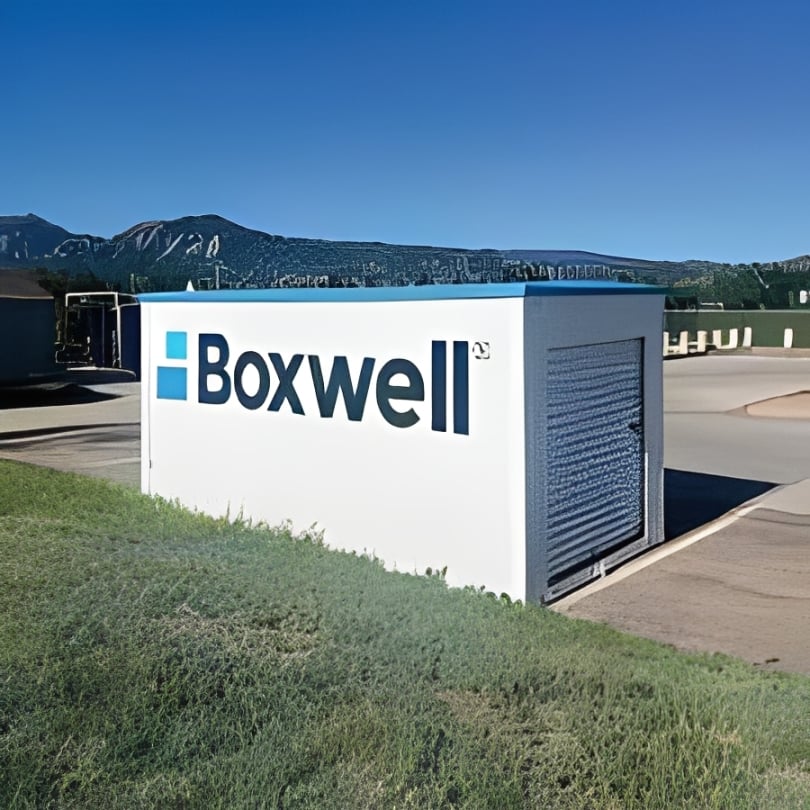Keeping Pace With Spare Space
Challenges Confront The Peer-To-Peer Self-Storage Disrupters
There has been some noise recently in Australia about self-storage industry disruption from peer-to-peer storage providers. Unsurprisingly, this noise often corresponds with capital raising efforts and website launches. Consequently, I am frequently being asked for a view about the impact and risk to the industry.
I appreciate that by diminishing the impact, I may appear as the arrogant ignorant incumbent. Some may even see Kennards as the likely Kodak of the self-storage sector. None the less, here I go.
Recently, one Australian self-storage disrupter start-up, Spacer, has stated an ambition of growth to achieve eight to 10 percent market share of the markets in which it operates. It has also raised capital and successfully acquired a U.S. peer known as Roost.
Spacer was not the first, joining a list of peer-to-peer storage disrupters who attempt to match people with some spare room with people who need more room. In principle, the idea seems sound and should get some traction.
New Again
The idea of people renting out their spare space to others is not new. It has happened informally for decades. Word of mouth often enabled people to share their space with others who needed it.
In the past, well before the internet, there was The Trading Post, a weekly newspaper publication that listed stuff for sale, wanted, and for rent. It had literally everything you could imagine, with a section of “Garages to Rent/Wanted”, and it was available at every newsagent. Moving forward, now in the digital era, platforms like GumTree have an abundance of garages, sheds, and storage spaces listed. This proves there is a market for peer-to-peer storage.
What these new peer-to-peer (P2P) platforms are attempting to do is enhance the consumer experience with a slick tech solution.
A quick Google search and investigation revealed the following P2P self-storage disrupters have emerged (or not) around the world:
- Storage-share.co.uk (U.K. and Netherlands)
- Spacer (Australia and U.S. via acquisition of Roost)
- Roost (U.S. – recently acquired by Spacer)
- Spaceout.com.au (Australia – website looks dated and dormant)
- Spacelli (U.S. and Australia – website states their activities have paused after launch one; website says they are coming back; wait for launch two.)
- Spacefinity (U.S. – appears it failed to launch)
- Storemates (U.K.)
- Storenextdoor (U.K. – P2P aggregator)
- Stashbee (U.K.)
- Yeswestock (U.K.)
- Sharemystorage.com (U.K.)
How Big Is The Market?
While the latest disrupter aspires for eight to 10 percent market share, we should understand the size of the markets.
Courtesy of Urbis Australia, they advise the following estimates of market supply:
Sydney: 74,557 spaces
Melbourne: 69,098 spaces
Brisbane: 38,909 spaces
182,558 spaces
From this, we can easily estimate the targeted share of spaces. Growing to 18,000 spaces across these markets is a formidable objective.
All Sizzle And No Sausage?
I assume the sponsors of these disrupters believe that an easy-to-use platform will expand the market and entice existing people to migrate from their current renting platforms.
New ideas certainly get attention, and, if they can successfully raise money, this does pique media interest. Elegant looking apps and slick websites add some excitement, even perhaps a look of credibility for a new concept. Everyone loves tech, and it is enticing to believe a fortune can be unlocked with the right solution and idea.
Interrogating the corporate backgrounds in some of the websites, the sponsors and founders of the disruptors often make claims about “revolutionizing self-storage”, becoming the “AirBnB of self-storage”, or have lofty ambitions of market share expectations.
Curiously, I couldn’t find a single founder who actually came from the self-storage sector. Maybe that doesn’t matter, but it does make one wonder if they genuinely appreciate the drivers, behaviors, and preferences of self-storage consumers and the market.
Challenges And Obstacles
I have a number of observations of the challenges and obstacles the P2P storage operators need to overcome to go from all sizzle to some sausage:
*Security and Privacy – Storage customers put great value in the privacy and security of their goods. If they use someone’s garage or shed, how much comfort can they have that the owner won’t rifle through their gear or leave the room exposed to a security breach? A common self-storage buy-line is “you lock it, you keep the key”, which impresses the complete privacy and certainty enjoyed by self-storage customers. Potentially, the storer may have access to the house, so there could be a security issue if it’s a spare room.
*Access, Convenience – Having free unrestricted access is very important to storers. This poses two challenges—one from each side of the transaction. First, the storer may feel uncomfortable going to someone’s home garage or shed regularly, in the evenings, and on weekends to go through their stuff. The established self-storage operators invest heavily in making access flexible, easy, and convenient. Second, the owner of the space may wish to protect their own privacy and restrict access to certain times.
*Tenure of Storage – Storage customers are understandably uncertain about the length of time they will store. In addition, almost without fail, they store for longer than they intend. Unlike short-term rentals, like car parking and AirBnB, storage is a long-term commitment. In my business, the median length of stay is 36 months. The storers often move away, too. This presents another two reciprocal challenges. First, for the storer; they will want certainty that the vendor won’t sell, have their lease terminated, moved, or just be asked to leave at any time. Second, for the vendor, what if they want to move home and they have a storer using their garage? What if they simply don’t like it and want their garage back? They will be burdened with the additional complication of getting the storer to vacate. This is often not very easy.
*Scale and Network – There is an obvious circular challenge for the self-storage P2P aspirants. They need scale (a lot of rooms available) and a diverse footprint to make their platform meaningful, useful, and, most importantly, viable. If they manage to attract potential storers on to their platform and they repeatedly fail to have a space available to satisfy the query, the user experience will be poor. They won’t come back.
My instincts are that they will enjoy their best inquiry levels where space is already at a premium and, as such, they will probably struggle to get the scale in listings. In my business, there are many high-demand markets where I would like to build more spaces but can’t. Similarly, I doubt they will be able to source space to match the users in the high-demand areas. There simply isn’t that much spare space in the inner urban densely populated areas.
The low barriers to entry for competing platforms to emerge could potentially also dilute their ability to get scale. Obviously, without scale, the model won’t be viable long term. The 10 to 15 percent service fee will feel slim as they attempt fund operating expenses and product development, in particular, battling for real estate on Google, which is akin to an arms race.
In closing, scratching below the surface of concept and veneer, there are real challenges with regard to consumer preferences and vendor obstacles. How the P2P storage providers overcome these will determine their future. I don’t see it as being very easy; as such, it is reasonable not to harbor great concern about their impact on the self-storage sector.
Sam Kennard is managing director of Kennards Self Storage, a privately-owned family business. Appointed to lead the family business in 1994, under his stewardship Kennards Self Storage has grown from 14 storage centres to over 85 centres. The company has over 250 employees with activities spanning Australia and New Zealand. He has extensive experience in business and property development focussing on growing the business in Australia and New Zealand. Sam has served on the board of the Self Storage Association of Australasia and private companies.
More Content
Popular Posts
The self storage industry is in a precarious...
Joe Shoen, CEO of U-Haul, has had enough.
Like its name implies, Surprise, Ariz., a...
Joe Shoen has had enough.
In a record-breaking deal finalized May 12,...
Senate Bill 709 (SB709) has many in the...
Donald Trump has just reclaimed the White...
The question of “abandonment” of stored...
Self-storage operators wear a lot of hats....
In 1992, Clinton strategist James Carville...
Recent Posts
From policy pivots in Ottawa to tariff...
Self-storage operators have struggled to...
Their signature red coats may draw attention...
Nailing down Josh and Melissa Huff for an...
Most self-storage operators are running...
The storage industry has long been a sound...
Despite widespread adoption of modern...
This year marks a major milestone for...



















